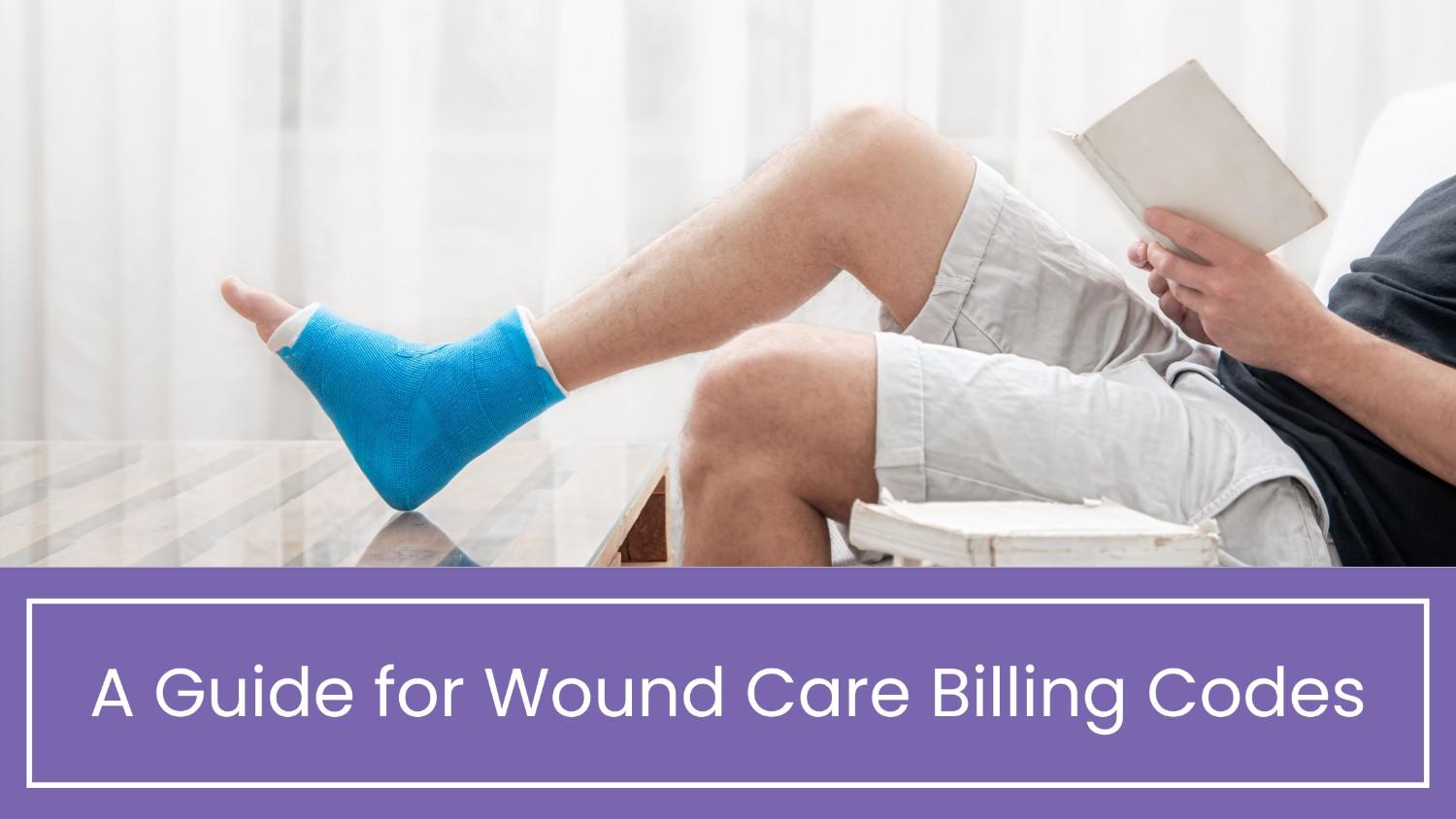A Guide for Wound Care Billing Codes
A guide for wound care billing codes can be a labyrinth of codes, regulations, and guidelines, making it challenging for healthcare providers to ensure accurate reimbursement for their services. However, mastering wound care cpt codes is essential for revenue cycle management (RCM) success. In this comprehensive guide, we’ll delve into the intricacies of wound care billing guidelines, exploring the various codes, documentation requirements, and best practices to optimize reimbursement and ensure compliance.
Table of Contents
Understanding A Guide for Wound Care Billing Codes
Wound care services are typically billed using Current Procedural Terminology (CPT) codes, which are standardized codes developed by the American Medical Association (AMA). These codes represent specific medical procedures and services provided to patients.
- Evaluation and Management (E/M) Codes:Initial assessments and subsequent visits for wound care patients are often billed using E/M codes, such as 99201-99215. These codes are based on the complexity of the patient’s condition and the level of service provided by the healthcare provider.
- Debridement Codes: Debridement, the removal of dead or necrotic tissue from a wound, is a common procedure code for wound care. Debridement codes include:
– 11042-11047 for surgical debridement.
– 97597-97598 for non-surgical debridement.
- Wound Care Management Codes: These codes cover various aspects of wound care management, including:
– Dressing changes: CPT codes 97597-97598 are used for wound dressing cpt code changes. These codes are also utilized for wound dressing changes, emphasizing the procedure’s role in non-surgical debridement. It’s important to note that when dressing changes are performed as part of non-surgical debridement, the same codes are applied. Documentation should clearly describe the procedure performed, including the cleaning and removal of devitalized tissue, if any, and the application of new dressings.
– Negative pressure wound therapy (NPWT): CPT codes for dressing change 97605-97606 are utilized for NPWT services. NPWT, an advanced wound care billing services for treatment uses sub-atmospheric pressure to encourage healing. Code 97605 is assigned for wounds 50 square centimeters or smaller, and 97606 for wounds larger than 50 square centimeters. Documentation should detail the wound size, the specific NPWT system used, and the duration of therapy to justify the use of these codes
- Skin Substitute Codes: In cases where skin substitutes are used to aid wound healing, specific codes are assigned, such as:
– 15271-15278 for application of skin substitutes.
Documentation Requirements for Wound Care Billing Service
Accurate and detailed documentation is crucial for proper wound care billing. Providers must ensure that their documentation supports the medical necessity of the services rendered and justifies the codes billed. Key components of documentation for wound care billing include:
– Patient History: Detailed documentation of the patient’s medical history, including comorbidities, previous treatments, and current medications.
– Physical Examination: Thorough examination of the wound, including size, depth, presence of infection, and surrounding tissue condition.
– Treatment Plan: Clear documentation of the treatment plan, including debridement procedures, dressing changes, and any additional interventions planned.
– Progress Notes: Regular progress notes documenting the response to treatment, changes in wound status, and any complications encountered.
– Photographic Evidence: Photographs of the wound before and after treatment can provide visual evidence of the effectiveness of interventions and support billing for wound care services provided.
Best Practices for Wound Care Billing
To optimize reimbursement and ensure compliance with billing regulations, healthcare providers should implement the following best practices in wound care billing Services:
- Stay Updated: Keep abreast of changes to CPT codes for wound care, documentation requirements, and billing regulations to ensure accurate coding and billing practices.
- Education and Training: Provide comprehensive training to healthcare staff involved in wound care billing to ensure they understand coding guidelines and documentation requirements.
- Utilize Technology: Invest in electronic health record (EHR) systems and billing software that streamline documentation and coding processes, reducing errors and improving efficiency.
- Audit and Review: Conduct regular audits of wound care documentation and billing practices to identify areas for improvement and ensure compliance with regulatory requirements.
- Communication: Foster open communication between clinicians, coders, and billing staff to address any discrepancies or coding challenges promptly.
- Engage with Payers: Maintain open communication with insurance payers to clarify coding guidelines, resolve billing disputes, and ensure timely reimbursement for wound care services.
Navigating wound care billing codes requires a comprehensive understanding of CPT Code for dressing wound, documentation requirements, and best practices for accurate reimbursement and compliance. By staying informed, implementing robust documentation practices, and leveraging technology and training, healthcare providers can optimize revenue cycle management and ensure the delivery of high-quality wound care services to patients. By following the guidelines outlined in this comprehensive guide, healthcare organizations can navigate the complexities of wound care billing with confidence and achieve RCM success.
Right Path to Enhance Wound Care Billing
In today’s rapidly evolving healthcare landscape, the integration of advanced billing solutions like those offered by Practolytics represents a significant leap forward in simplifying wound care medical billing. However, the efficacy of these solutions extends beyond their standalone features. The true value lies in their ability to seamlessly integrate with existing healthcare IT ecosystems. Interoperability—the capability of different systems, devices, and applications to connect and exchange data accurately, effectively, and securely within and across organizational boundaries—is paramount.
Interoperability ensures that patient data flows smoothly from electronic health records (EHRs) to billing systems, reducing manual data entry, minimizing errors, and streamlining the billing process. This seamless exchange of information enhances the accuracy of claims, expedites reimbursement, and ultimately improves patient care by allowing healthcare providers to focus more on clinical outcomes rather than administrative tasks.
Practolytics is designed with this critical requirement in mind. Our solutions are built to be compatible with a wide range of EHRs and other healthcare management systems. By leveraging standard data exchange protocols and APIs, Practolytics ensures that healthcare providers can easily integrate our billing solutions into their existing IT infrastructure, thus facilitating a unified and efficient workflow.
Moreover, Practolytics emphasizes the importance of data security and compliance with healthcare regulations such as HIPAA, ensuring that all patient information is handled with the utmost care and confidentiality. With our advanced billing software, healthcare providers can navigate the complexities of wound care billing with greater ease, backed by the support of a system that communicates effectively with their entire IT ecosystem.
Incorporating technology that supports interoperability not only simplifies the billing process but also propels healthcare providers towards more integrated, patient-centered care. By choosing solutions like Practolytics, which prioritize seamless integration and compliance, healthcare organizations can ensure they are well-equipped to meet the demands of modern wound care management and billing.
ALSO READ – The Crucial Role of Electronic Health Records (EHR) in Telehealth Integration: A 2024 Perspective
Talk to Medical Billing Expert Today — Get a Free Demo Now!






